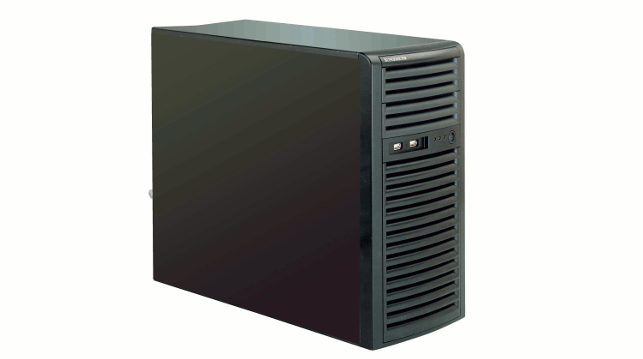InterPro’s new ‘Enterprise class’ workstation delivers two ten core chips in a remarkably compact chassis.

Its Xeon E5-2680 v2s aren’t the fastest ten core chips out there (at 2.8GHz they’re a full 0.2GHz shy of the Xeon E5-2690 v2) but costing just over £1,000 per chip, they deliver good price/performance. And they certainly pack some punch.
Rendering in KeyShot is impressive, with scenes refining in seconds, rather than the minutes it takes our quad core office workstation. And it does all this extremely quietly, even when both 130W Xeon CPUs have been flat out for some time.
They say numbers don’t lie, but in our 3ds Max render test it seems they do. Our initial render times were slower than expected so we had to turn off Hyper-Threading to get a more realistic score. Mental ray in 3ds Max 2011 is limited to 32 threads so two physical cores weren’t being used.
We would expect to shave 10% off the render time with HyperThreading turned on, which would be possible in 3ds max 2014, as it would in virtually all new ray trace rendering apps.
Fuelled by a powerful Nvidia Quadro K5000 GPU, the machine romped through our graphics tests. With 4GB of GDDR5 memory this high-end GPU should also be a good partner for texture heavy design viz.
64GB of ECC memory gives plenty of capacity for large models and with 12 of the 16 DIMM slots still free, lots of room for expansion.
Storage is more standard, combining a 240GB PNY Prevail SSD for OS and apps and a 3TB Seagate Barracuda HDD for data. And there’s room for two more in this compact Supermicro chassis, which is certainly smaller than most dual processor workstations and great for space constrained environments.
The trade off is it’s quite tricky to get to the drives, which are housed in a metal cage that needs to be rotated 90 degrees to get access.
InterPro has put together an impressive machine for design viz users that’s aggressively priced. It’s well balanced in terms of CPU and GPU and there’s plenty of room for expansion.
To view comparative scores from other workstations please click here
For details of all our specific CAD/CAM/CAE benchmarks click here
Specifications
» 2 x Ten Core Intel Xeon E5-2680 v2 ‘Ivy Bridge’ (2.80GHz)
» 64GB (8 x 8GB) DDR-3 1,866MHz ECC Registered (PC3-15000)
» Nvidia Quadro K5000 (4GB GDDR5) (320.86 driver)
» 240GB PNY Prevail SSD + 3TB Seagate Barracuda HDD
» Supermicro X9DAi motherboard (Intel C602 chipset)
» Microsoft Windows 7 Professional 64-bit
» 3 year Return to Base (RTB) (Inc. Parts and Labour)
CPU benchmarks
(secs – smaller is better)
CAM (Delcam PowerMill 2010) – 1) 170 2) 173 3) 179
CAE (SolidWorks 2010 Simulation) – 90
Rendering (3ds Max Design 2011) – 85 (HyperThreading turned off)*
Graphics benchmarks
(bigger is better)
CAD (SolidWorks 2013 – SPECapc graphics composite) – 6.28
CAD (Creo 2.0 – SPECapc graphics test) – 6.38
2 x Ten Core Intel Xeon E5-2680 v2 ‘Ivy Bridge’ (2.80GHz)
64GB (8 x 8GB) DDR-3 1,866MHz ECC Registered (PC3-15000)
Nvidia Quadro K5000 (4GB GDDR5) (320.86 driver)
Supermicro X9DAi motherboard (Intel C602 chipset)
240GB PNY Prevail SSD + 3TB Seagate Barracuda HDD
3 year Return to Base (RTB) (Inc. Parts and Labour)
N/A
170
173
179
90
85 (HyperThreading turned off)
N/A






